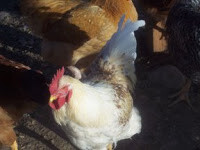Lateral, bilateral, mid-axillery, proximal, palmar . . . . I’m starting to think my head might explode before I get through chapter four of my EMT manual, and the first class hasn’t been held yet. On the other hand, I have a great 1000-something page reference book on injuries, body parts and physiological issues. By the end of this course I’ll be able to hold the kind of coded conversations only medical people understand. “He has bilateral crackling in the lungs, get the BMV stat and get pumping. The AED shows an SpO2 of 93% and falling and he has serious bradycardia. Do we have a systolic yet?”
Did anyone understand that? I only did because I looked up bradycardia and have now spent hours reading my text for this week’s beginning class. I can’t remember what crackling sounds in the lungs indicate, I’ll have to ask my instructor tomorrow, but I know it’s not good. Otherwise we’ve got someone with a weak pulse, need a blood pressure and because they are having trouble getting oxygen into their lungs they need help breathing.
*Whew* only 700-some-odd pages left to go. It’s a good thing I’ll have instructors to translate all the mumbo jumbo into words I’ll understand, not to mention the hours I’ll spend practicing taking blood pressures and pulses. I’m just as happy to pass on giving IVs for now. Thanks. In other news, my flock of roosters is about to take a significant drop in numbers. If all goes as planned by this time tomorrow I will not only be in EMT training, but my 24 birds will be down to 3 hens, 1 rooster and 4-maybe-their-hens-maybe-their-roosters-we’ll-wait-and-see. Don’t worry, I won’t go into gory details here. I’m not sure I’ll ever cull my flock in this manner again, but millions of people around the world hunt every year, right, so it can’t be that horrible. At least Evil Lester will stop picking on me. PS the cricoid cartilage is located in the larynx (tube between the mouth and the lungs).
PS the cricoid cartilage is located in the larynx (tube between the mouth and the lungs).
